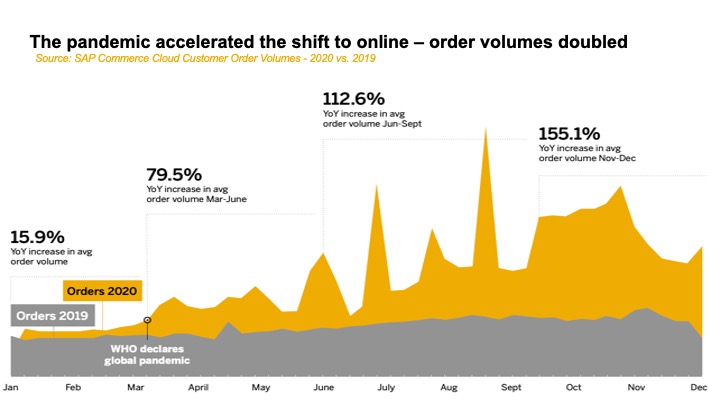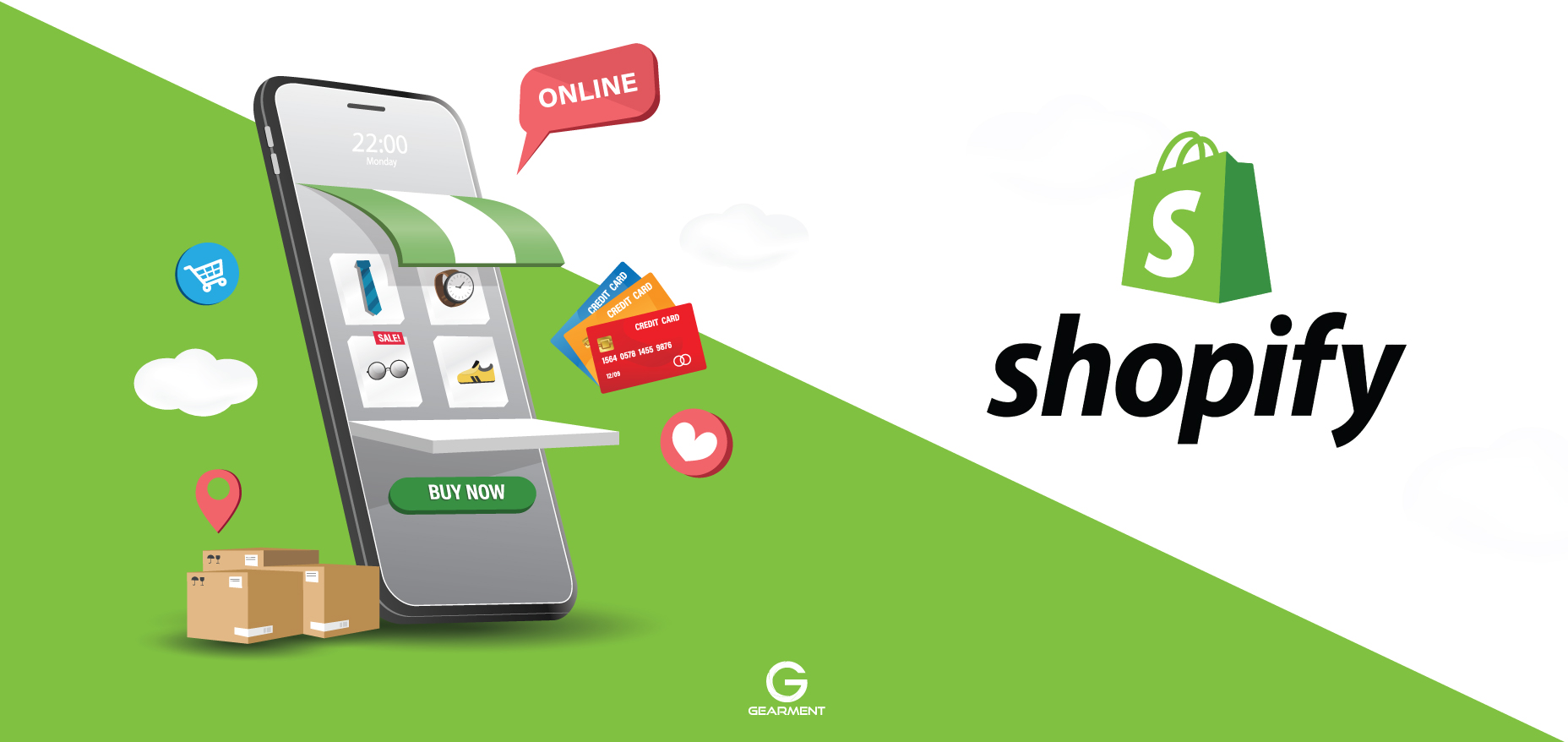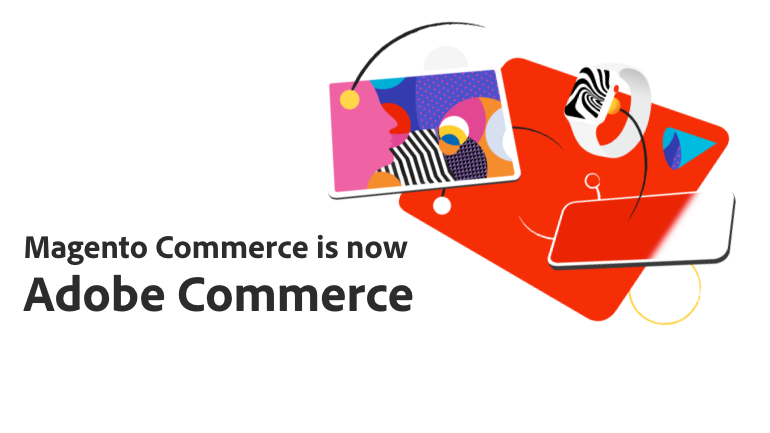Which E-Commerce Platform Reigns Supreme?
Dignify
3 September 2024

18 min read
Table of contents
- A Deep Dive into Shopify, Magento, and WooCommerce for 2024
- Platform General Overview: Shopify, Magento, and WooCommerce
- 1. Shopify: Simplifying E-Commerce for All Businesses
- 2. Magento: The Powerhouse for Large Enterprises
- 3. WooCommerce: Flexibility for WordPress Users
- Understanding E-commerce and online sales
- The Rise of E-commerce
- Key Considerations for Choosing an E-Commerce Platform
- 1. Ease of Use and User Experience
- 2. Scalability and Performance
- 3. Customization and Integration Capabilities
- 4. Upfront and Ongoing Costs
- Shopify: A User-friendly Online Shopping Solution
- What is Shopify?
- The Pros of Shopify
- User-Friendly Interface and Cost Efficiency
- Comprehensive Features
- Scalability
- Vibrant App Ecosystem
- The Cons of Shopify
- Limited Customization
- Transaction Fees
- Example: Gymshark
- Magento/Adobe Commerce: A Scalable E-commerce Solution
- What’s the difference between Magento and Adobe Commerce?
- The Pros of Magento/Adobe Commerce
- Scalability
- Customization
- Third-Party Integrations
- Large Community
- The Cons of Magento/Adobe Commerce
- Complexity
- Cost
- Hosting Requirements
- Example: Landrover
- WooCommerce: A Flexible E-commerce Solution
- What is WooCommerce?
- The Pros of WooCommerce
- Flexibility
- WordPress Integration
- Large Plugin Ecosystem
- Cost-Effective
- The Cons of WooCommerce
- Complexity
- Self-Hosted
- Limited Support
- Example: Daelmans Stroopwafels
- Choosing the Right E-commerce Platform for Your Business?
- In a Nutshell: Which E-commerce Platform Do you Need?
- Final Conclusion
A Deep Dive into Shopify, Magento, and WooCommerce for 2024
E-commerce is evolving rapidly, and selecting the right platform is more crucial than ever. As business leaders, marketing professionals, and IT decision-makers, choosing the best platform can significantly impact your MarTech strategy, digital transformation, and customer experience. In this article, we’ll explore the leading e-commerce platforms—Shopify, Magento, and WooCommerce—and help you determine which one aligns with your business needs in 2024.
Explore our Martech SolutionsPlatform General Overview: Shopify, Magento, and WooCommerce
Before diving into the specifics of each platform, it’s important to understand what makes them unique and how they cater to different business requirements.
1. Shopify: Simplifying E-Commerce for All Businesses
Shopify is known for its user-friendly interface and ease of setup, making it a popular choice among small to medium-sized businesses. With a range of built-in features and a vast app marketplace, Shopify provides flexibility and scalability as your business grows.
- Pros: Easy to use, excellent customer support, wide range of themes and plugins.
- Cons: Limited customization compared to other platforms, transaction fees unless using Shopify Payments.
2. Magento: The Powerhouse for Large Enterprises
Magento, also known as Adobe Commerce in its cloud version, offers extensive customization and scalability. It’s ideal for businesses with complex needs, high traffic, and large product catalogs. With robust security features and a strong developer community, Magento can handle extensive customizations and integrations.
- Pros: High customization potential, scalability, robust integration capabilities.
- Cons: Requires technical expertise, higher cost, longer implementation time.
3. WooCommerce: Flexibility for WordPress Users
WooCommerce is an open-source plugin for WordPress, making it a great option for businesses that already have a WordPress site. It offers flexibility and a wide range of plugins to enhance functionality. However, being self-hosted, it requires more management and technical know-how.
- Pros: Highly customizable, cost-effective, integrates seamlessly with WordPress.
- Cons: Requires technical skills for setup and maintenance, limited direct support.
Understanding E-commerce and online sales
Before we dive into the specifics of each platform, let’s take a moment to understand what e-commerce is and why it’s so important in today’s business landscape. E-commerce, or electronic commerce, refers to the buying and selling of goods or services online. It involves online business transactions that are conducted online, making products and services accessible to consumers worldwide.
E-commerce businesses vary widely, from small online stores peddling handmade crafts to large-scale retail operations like Amazon. Many companies also take advantage of existing marketplaces such as Amazon and bol.com to reach a broader audience. Regardless of the scale or platform, all e-commerce businesses aim to reach consumers wherever they are and offer a seamless online shopping experience. This involves not just selling products or services online, but also managing the supply chain, handling customer service, and dealing with various other operational aspects.
In the digital era, e-commerce is not just a business model; it’s a vital part of the global economy. It’s revolutionizing the way businesses operate and consumers shop. If you’re not part of this digital transformation, you’re missing out on a wealth of opportunities. The impact of e-commerce is only set to grow in the coming years, making it an essential consideration for any business.
The Rise of E-commerce
The growth of e-commerce has been nothing short of explosive. With the advent of digital and mobile commerce everywhere, businesses can now reach a global audience, and consumers can shop online from the comfort of their homes. This has led to a seismic shift in the retail landscape, with traditional brick-and-mortar stores increasingly making way for online stores.
In key countries like Belgium, the Netherlands, and Germany, e-commerce has seen significant growth. For instance, in 2021, the e-commerce market in Germany was worth €96.3 billion, a growth of 15.5% compared to the previous year. In the Netherlands, online sales increased by 10% in the same year, while in Belgium, the e-commerce sector grew by 7.8%.

Source: The Future Of E-commerce
E-commerce has also led to the development of various e-commerce platforms, each offering unique features and capabilities. These platforms are the backbone of an e-commerce business, providing the necessary tools to manage online sales, inventory, and customer relationships. They also offer many other features, such as marketing tools, analytics, and integrations with other software, to help businesses run their e-commerce websites and online operations more efficiently and effectively.
This growth is not limited to B2C (business-to-consumer) companies. B2B (business-to-business) e-commerce is also on the rise, with more businesses selling directly to other businesses online. Additionally, the Direct-to-Consumer (D2C) model, a point of sale where businesses sell directly to the end customer, is gaining popularity.
E-commerce has led to the development of various e-commerce platforms, each offering unique features and capabilities. These various e-commerce platforms serve as the backbone of an e-commerce business, providing the necessary tools to manage online sales, inventory, and customer relationships.
Key Considerations for Choosing an E-Commerce Platform
When selecting an e-commerce platform, consider the following factors to ensure it aligns with your business strategy and technical capabilities.
1. Ease of Use and User Experience
An e-commerce platform should offer an intuitive user interface and smooth navigation for both administrators and customers. For example, Shopify’s drag-and-drop editor allows businesses to create and manage online stores with minimal technical knowledge, making it ideal for those new to e-commerce.
Meanwhile, Magento’s robust backend is suitable for those with advanced technical skills or dedicated IT teams, providing more control over the user experience but requiring more expertise to manage.
2. Scalability and Performance
As your business grows, so should your e-commerce platform. Magento’s architecture is designed to handle high traffic and large product inventories, making it a preferred choice for enterprises anticipating rapid growth or large seasonal spikes in traffic.
Scalability is also crucial for IT decision-makers looking to future-proof their technology stack. WooCommerce offers scalability through a variety of plugins and integrations but requires careful management of hosting resources to ensure optimal performance.
3. Customization and Integration Capabilities
Customizing your e-commerce platform to align with your brand and operational needs is vital. Magento offers unparalleled customization capabilities with its modular architecture, allowing for bespoke features and functionalities. WooCommerce also provides deep customization options through its open-source nature and vast plugin ecosystem.
Shopify, while less customizable out of the box, offers a range of third-party apps and plugins that can extend functionality, making it a strong contender for businesses needing ease of use over extensive customization.
4. Upfront and Ongoing Costs
Shopify offers a range of pricing plans, from basic to advanced, with additional costs for premium themes and apps. These can add up, especially for growing businesses. Magento, being self-hosted, requires investment in hosting, development, and maintenance, which can be significant for enterprises.
- Shopify: Subscription fees range from $29 to $299 per month, plus additional costs for apps and transaction fees.
- Magento: High initial setup costs and ongoing maintenance expenses, especially for custom development.
- WooCommerce: Free to start but requires payment for hosting, domain, and premium plugins.
Shopify: A User-friendly Online Shopping Solution

Shopify stands out in the e-commerce platform landscape for its ease of use and robust set of features, making it a top choice for businesses ranging from small startups to large enterprises. Its intuitive design and scalable solutions have earned it a reputation as a go-to platform for those looking to launch their first online store or expand their digital presence.
What is Shopify?
Founded in 2006, Shopify is a Canadian e-commerce company that enables businesses to set up and operate their own online stores. Today, Shopify hosts over a million businesses across 175 countries, offering a platform that combines simplicity with powerful features. The platform’s popularity stems from its user-friendly interface, comprehensive feature set, and ability to scale with business growth.
The Pros of Shopify
User-Friendly Interface and Cost Efficiency
One of Shopify’s key advantages is its user-centric design. The platform is built to be intuitive, allowing even those without a technical background to easily create and manage an online store. From adding products and managing inventory to configuring payment gateways and setting up shipping options, Shopify simplifies the entire e-commerce process. This simplicity often translates to cost savings, as businesses can launch their online store quickly and allocate more resources to marketing and growth strategies.
Comprehensive Features
Shopify offers a wide range of features essential for running an e-commerce business effectively. These include:
- SEO Tools: Built-in SEO features help improve your store’s visibility in search engine results.
- Marketing Tools: Integrated marketing tools enable targeted campaigns to reach your ideal audience.
- Analytics: Advanced analytics provide insights into customer behavior and sales performance, allowing for data-driven decision-making.
Scalability
As your business grows, so does Shopify’s ability to accommodate your needs. The platform offers various plans that cater to different stages of business growth, ensuring that your e-commerce store can handle increased traffic and transactions. For enterprise-level operations, Shopify Plus offers enhanced scalability with features designed for high-volume merchants, including advanced customization options, dedicated support, and access to exclusive apps.
Vibrant App Ecosystem
Another significant advantage of Shopify is its extensive app store, featuring thousands of apps designed to extend and enhance the functionality of your online store. Whether you need to integrate with third-party services, automate routine tasks, or add new features, Shopify’s app ecosystem provides a vast array of options to tailor your store to your specific needs.
The Cons of Shopify
Limited Customization
Despite its many strengths, Shopify has some limitations in terms of customization. The platform provides a variety of pre-designed templates, but these templates often lack the depth of modification some businesses might require. Full customization, especially for the checkout process, is typically reserved for Shopify Plus users. This means that businesses looking for a highly bespoke online store experience might find Shopify’s customization options somewhat restrictive. For those who need extensive customizations, learning Shopify’s proprietary coding language, Liquid, or upgrading to Shopify Plus might be necessary.
Transaction Fees
Another potential drawback of Shopify is its transaction fee structure. Unless you use Shopify Payments, the platform’s native payment gateway, you will incur additional transaction fees on top of your regular credit card processing fees. For businesses with high volumes of online sales, these costs can add up quickly, potentially impacting profit margins. It’s crucial to factor these fees into your overall financial planning when considering Shopify as your e-commerce platform.
Example: Gymshark

Gymshark, a leading brand in innovative athletic wear, exemplifies the benefits of using Shopify. The brand needed a platform that could offer a smooth, responsive, and user-friendly experience for its target audience—fitness enthusiasts who value efficiency and clarity. Shopify’s streamlined interface and optimized checkout process aligned perfectly with Gymshark’s brand ethos, ensuring customers could easily find and purchase the products they wanted. As Gymshark expanded rapidly, Shopify’s scalable infrastructure allowed the brand to handle increased traffic and sales volumes seamlessly, maintaining performance even during high-demand periods.
Magento/Adobe Commerce: A Scalable E-commerce Solution

Magento, now rebranded as Adobe Commerce in its SaaS form, is a powerful and scalable e-commerce platform favored by mid to large enterprises, especially in the B2B sector. Known for its flexibility and extensive customization options, Magento/Adobe Commerce is designed to cater to businesses with complex needs and large-scale operations.
What’s the difference between Magento and Adobe Commerce?
Adobe acquired Magento in 2018. Adobe Commerce is the licensed version of Magento and comes with additional features and functionality out of the box, one that stands out is the integrated B2B functionality. However, it also comes with a higher price tag.
The Pros of Magento/Adobe Commerce
Scalability
Magento/Adobe Commerce is designed to handle extensive product inventories and high-volume transactions, making it an excellent choice for businesses with growth ambitions. Its scalability extends to supporting multilanguage and multicurrency operations, making it a suitable platform for companies looking to expand globally. By allowing businesses to cater to diverse markets, Magento/Adobe Commerce can enhance customer satisfaction, boost sales, and improve market penetration.
Customization
One of the standout features of Magento/Adobe Commerce is its high level of customization. The platform allows businesses to design their e-commerce solution to perfectly align with their unique needs, from the checkout flow and product search functionality to personalized content. This flexibility enables companies to provide a tailored user experience, which can significantly increase customer engagement and drive revenue growth.
Third-Party Integrations
Magento/Adobe Commerce excels in its integration capabilities, offering customizable REST and GraphQL APIs that facilitate seamless connections with essential business systems such as CRM software, marketing tools, and payment gateways. These integrations help streamline operations, improve data accuracy, and enhance efficiency, allowing businesses to build personalized e-commerce solutions that drive growth, reduce operational costs, and improve their bottom line.
Large Community
The platform benefits from a vast community of developers, users, and partners who contribute to a rich ecosystem of extensions, resources, and support. This large community helps keep the platform up-to-date with the latest e-commerce trends and best practices, providing businesses with the flexibility to choose from numerous support agencies and reducing the risk of vendor lock-in. This makes Magento/Adobe Commerce a reliable, future-proof option for enterprises.
The Cons of Magento/Adobe Commerce
Despite its strengths, Magento/Adobe Commerce has its drawbacks.
Complexity
Despite its strengths, Magento/Adobe Commerce is not without its challenges. The platform is known for its complexity and requires a steep learning curve, making it necessary for businesses to hire experienced developers or work with specialized agencies. This complexity extends to platform updates and maintenance, which can also require expert knowledge and skills.
Cost
Launching a store on Magento/Adobe Commerce can involve significant upfront costs and a longer setup time compared to other SaaS platforms. However, it is essential to consider the platform’s long-term value. Investing in Magento/Adobe Commerce can reduce the need for future re-platforming, leading to long-term savings and stability for businesses willing to invest in a robust, scalable solution.
Hosting Requirements
Magento/Adobe Commerce can handle large volumes of products and transactions, but it requires a robust hosting environment to perform optimally. This means businesses may need to invest in high-quality managed hosting services to ensure that their online store remains fast, reliable, and capable of handling peak traffic periods without issues.
Example: Landrover

Landrover UK, a renowned brand known for its luxury vehicles, chose Magento/Adobe Commerce to build its online store. The decision was strategic, aligning with Landrover’s brand prestige and the platform’s capability to handle complex product catalogs and provide a sophisticated user experience. Magento/Adobe Commerce’s robust feature set ensures that visitors to Landrover’s site enjoy the same level of quality and sophistication they expect from the brand. Additionally, Magento’s powerful integration capabilities allow Landrover to synchronize its online shop with other systems, including inventory, CRM, and ERP, creating a cohesive brand experience across all digital touchpoints.
WooCommerce: A Flexible E-commerce Solution
WooCommerce is a free, open-source e-commerce platform built on WordPress. Known for its flexibility and extensive customization options, WooCommerce is a popular choice among businesses that already have a WordPress website and want to add e-commerce functionality.
What is WooCommerce?
WooCommerce is an e-commerce plugin for WordPress, the world’s most popular content management system. It allows you to turn your WordPress website into a fully functional online store with just a few clicks. Since its launch in 2011, WooCommerce has grown in popularity and is now used by a large number of online stores.
The Pros of WooCommerce
Flexibility
WooCommerce’s main advantage is its flexibility. As an open-source platform, WooCommerce allows for unlimited customization. Businesses can add a wide range of features and functionalities to their online store, from custom themes to selling features to unique payment options.
WordPress Integration
If you’re already using WordPress for your website, WooCommerce is a natural choice for your e-commerce platform. It integrates seamlessly with WordPress, allowing you to manage your website and online e-commerce store all from a single dashboard.
Large Plugin Ecosystem
Like WordPress, WooCommerce has a large ecosystem of plugins. These plugins can extend the functionality of your online store, adding features like advanced shipping options, product bundles, and more.
Cost-Effective
WooCommerce is free to use, making it a cost-effective choice for small businesses and startups. While there are costs associated with hosting, domain registration, and premium plugins, WooCommerce still tends to be a more affordable option compared to other e-commerce platforms.
The Cons of WooCommerce
Despite its advantages, WooCommerce has its drawbacks.
Complexity
While WooCommerce is relatively easy to use if you’re familiar with WordPress, it can be complex for those who aren’t. The platform offers extensive customization options, but these require a certain level of technical knowledge to use effectively.
Self-Hosted
As a self-hosted platform, businesses using WooCommerce are responsible for managing their own hosting, security, and updates. This can be a challenge for businesses without technical expertise and can increase the time and effort required to manage the online store.
Limited Support
While WooCommerce offers documentation and forums, it doesn’t provide direct customer support. If you run into issues, you’ll need to rely on community support or hire a developer to help you out.
Example: Daelmans Stroopwafels

Daelmans Stroopwafels, representing a niche yet beloved product, has made a wise choice in selecting WooCommerce for its online storefront. WooCommerce, built on WordPress, is well-suited for businesses that require a blend of content-rich storytelling alongside e-commerce capabilities. The platform is incredibly flexible, allowing Daelmans to craft a unique narrative around the heritage and quality of their stroopwafels. Additionally, WooCommerce’s vast plugins and extensions ensures that Daelmans can fine-tune their site’s functionality to match their specific needs, from unique product displays to specialized shipping options. Its platform facilitates a deep connection between brand and consumer, making it an apt choice for a company with such a rich legacy.
Choosing the Right E-commerce Platform for Your Business?
In the world of e-commerce, choosing the right platform is a critical decision that can shape the future of your online business. Shopify, Magento/Adobe Commerce, and WooCommerce each offer unique features and capabilities that can help drive your online sales and elevate your e-commerce business.
Shopify, with its user-friendly interface and comprehensive features, is an excellent choice for businesses of all sizes, particularly those looking to establish their first online store. Its ease of use and scalability make it a robust platform that can grow with your business. However, its pricing and transaction fees can be a drawback for some businesses.
Magento/Adobe Commerce, on the other hand, is a powerful and flexible e-commerce solution that’s well-suited to large businesses and enterprises. Its scalability, customization options, and extensive features make it a robust solution for large-scale e-commerce operations. However, its complexity and cost can be a barrier for smaller businesses or those without technical expertise.
WooCommerce is a flexible and cost-effective e-commerce platform that’s a great choice for businesses already using WordPress. Its flexibility and large plugin ecosystem make it a powerful tool for building a unique online store. However, its complexity and the responsibilities that come with being a self-hosted platform can be a challenge for some businesses.
In a Nutshell: Which E-commerce Platform Do you Need?

+++: This indicates that the platform excels remarkably in the given criteria. For instance, if “User-Friendly” has a ‘+++’ rating for a platform, it means the platform is extremely user-friendly and is one of its strongest attributes.
++: This shows that the platform performs well in the mentioned criteria but might have some limitations or areas where improvements could be made. A ‘++’ under “Ease of Use” would suggest that while the platform is easy to use, certain aspects might require a learning curve or additional resources.
+: This signifies that the platform offers a basic functionality or benefit in the particular criteria. For example, a ‘+’ in “Technical Expertise Needed” means the platform requires some technical know-how but is relatively minimal.
—: This implies that the platform has significant challenges or drawbacks in the specific criteria. If “Complexity” has a ‘—‘ rating for a platform, it means it is very complex to handle or navigate, potentially requiring external expertise or extensive training.
—: This denotes that the platform has clear challenges or limitations in the specific criteria. A ‘–‘ under “Pricing” could indicate that while the platform offers value, its pricing is relatively high or not fully transparent.
–: This indicates that the platform has some minor challenges or shortcomings in the given criteria. For example, a ‘-‘ in “Customization” suggests that while customization is possible, it might not be as extensive as some users might wish.
Remember, the success of your e-commerce business depends not only on the platform you choose but also on how well you understand your customers and their online shopping habits. So, keep exploring, keep learning, and keep growing your online e-commerce business.
Final Conclusion
Choosing the right e-commerce platform depends on your business goals, technical capabilities, and budget. Shopify, Magento, and WooCommerce each offer unique benefits that cater to different business needs. For personalized guidance in selecting and implementing the best platform for your digital strategy, contact Dignify today for a consultation.
Ready to elevate your e-commerce strategy? Partner with Dignify, your expert in MarTech solutions, to build a robust digital ecosystem that drives growth and innovation.
Koen Claes Rouire
Do you want relevant content delivered to your inbox?
Subscribe to our newsletter and stay up-to-date with the latest news about everything digital.More ideas
Keep on reading
-

29 August 2025
When your chatbot goes from “meh” to medical-grade
Digital Products -

29 August 2025
Meet your new HR assistant (and no, it’s not a person)
Digital Products -

2 July 2025
Press Release: addData fully integrates into Dignify, strengthening data-powered marketing impact
Press Release -

24 March 2025
Marketing Master? or just hitting that send button?
Marketing Automation